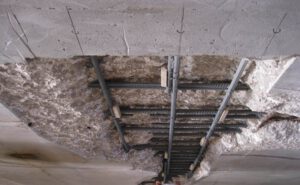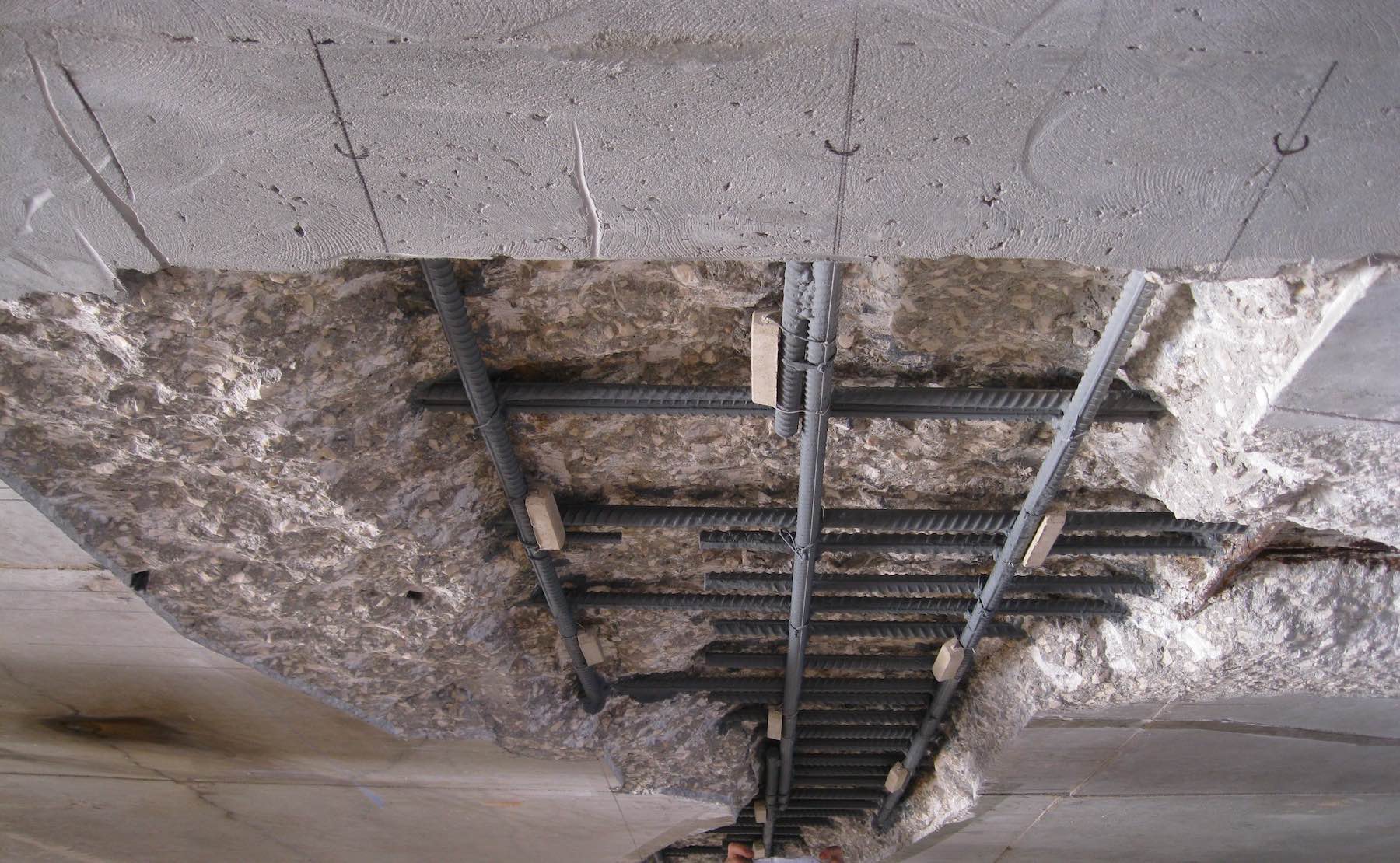When performing Concrete Repair the primary concern is to prevent further damage. This requires the use of concrete repair materials and techniques which minimize differential shrinkage between the original concrete and repaired concrete. These methods are most effective when performed as soon as a defect is identified. To prevent delamination, cracks, or other issues with the repaired concrete, it is important to thoroughly clean and moisten the affected area before beginning work. Various methods of concrete repair are available and should be used according to the type and size of the work.
The type of concrete used in repairs should contain the same ingredients as the original mix. The only difference is that it should be made of less water than the original mix. The dry-pack concrete type needs force to compaction, and its size is important too. However, the repair materials used should be able to withstand the same level of traffic as the original. Depending on the size of the aggregate, a dry-pack concrete should be suitable.
The first thing to look for in the damaged concrete is cracks and unevenness. Cracks can lead to severe structural issues. If left untreated, cracks may even spread, affecting the foundation of the house. To avoid this, a professional concrete repair service can inspect the affected area and determine a course of action. It is often much cheaper to level the concrete rather than replace it completely. In addition to assessing the damage, a concrete repair company can offer you a price quote based on the extent of the problem.
A concrete repair company has prepared a comprehensive glossary of terms used in concrete repair. It is a valuable resource for engineers and the general public alike. With more concrete repairs performed, it is important to learn about concrete repair technologies. These technologies are designed to provide durable, long-lasting results for concrete surfaces. They also provide a range of safety options and have the highest standards in the industry. For more information on concrete repair, visit our website.
If you are planning to repair a concrete structure, you need to make sure you have the necessary knowledge and equipment to perform the job properly. When performing concrete repairs, you should also make sure that you prepare the area thoroughly. First, remove all corroded reinforcing bars from the concrete. You must clean the steel and make sure it is free from corrosion products before you tie the new steel to it. Secondly, you must carefully inspect the repaired area for cracks or voids.
The best method of concrete repair is to prevent structural cracks from recurring. This requires a skilled contractor to use a special cement-based solution. After performing a concrete repair, you must consider the condition of the concrete in question. You must consider whether the crack is active or passive. If it is not, you can use an epoxy injection. A professional will carefully inspect the crack. If the crack is still active, you should use a urethane sealant. This is a more permanent method, but it does not create a structural bond.
While surface defects are the easiest to repair, they require skilled application and finishing. A competent repair contractor will apply the repair material, prep the concrete, and cure it to make it look good. The surface should be level and cured in the appropriate manner. Otherwise, you will have to deal with other problems like cracks or leaks. If you are unsure of what to do, try using a standard repair material. You might even want to try a proprietary repair product, which contains the exact materials needed for the repair job.
Random spalling is another common problem in concrete. It can be the result of a freeze-thaw cycle, exposure to corrosive elements, or improper installation. If the spalling is due to the foundation of the structure, you should use a two-component epoxy-based mortar. Overlays are required in areas where concrete is exposed to high temperatures and corrosive elements. Several other types of random spalling may require acid etching or primers.
Once you have noticed a crack in the concrete, you should clean it as soon as possible. Using a simple concrete stain remover may not be necessary, but soap and water might help. If the stain is made of oil, you may have to apply acetone or amyl acetate to clean the concrete. These solutions are more effective for removing small stains than large ones. In addition to this, you should thoroughly rinse the concrete after washing it.
